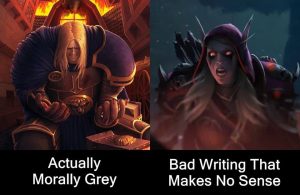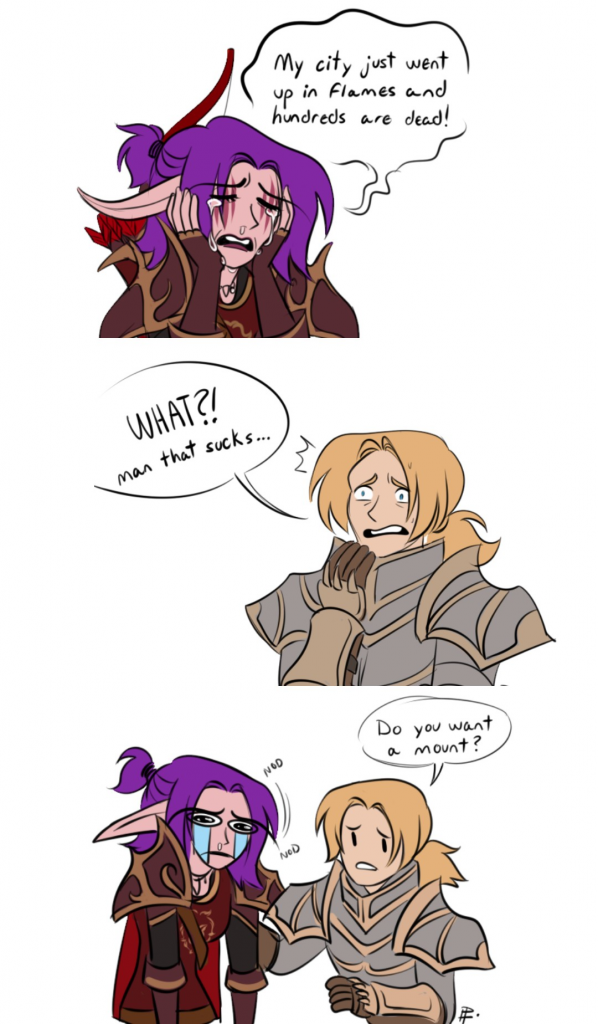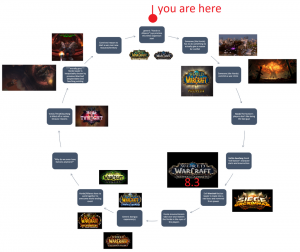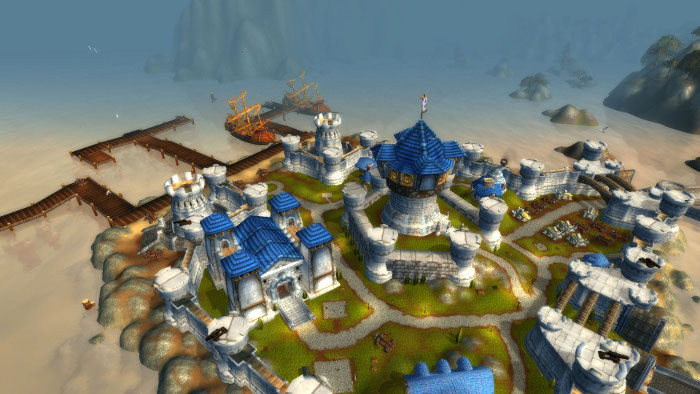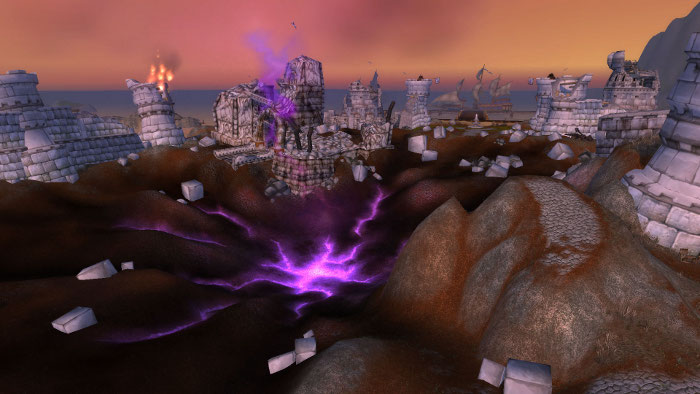It’s summer, the season when gaming life can seem to go on uneventfully for days or weeks. However, sometimes things happen to shake-up these doldrums. Sometimes, it’s a thing that ripples out from the game and makes its way to the news pages of the world wild web. If it has anything to do with the past, chances are that such an event will be discussed in depth in VALUE’s Slack channels.
That is what happened in the case of the Burning of Teldrassil, a recent but already infamous event in World of Warcraft (from hereon referred to as WoW). Of course it was already on the radar of our long-time WoW players, but when Doc Random read about the burning and player’s reactions to it on Kotaku, he thought he could have all sorts of hot takes (pun intended) on it and get away with it.
Is there a link between the Burning of Teldrassil and the destruction of heritage? Or is this just a case of an old-school ethnographer who was trying to tell “indigenous people” what their culture meant. You can decide for yourself! If you are already on the ball with this particular digital conflict (both within and outside of WoW), scroll on down to see a (long!) bit of VALUE banter.
However, some introductions may be in order. After all, not everyone plays WoW, has played Warcraft III, let alone heard of the main agent propelling this discussion, Sylvanas Windrunner. For that Jaromirr has you covered!
Start of Jaromirr's original piece
Lady Sylvanas Windrunner, also referred to as “the Banshee Queen”, is the Warchief of the Horde and supreme ruler of the Forsaken, one of the most powerful factions of undead on Azeroth. In life, Sylvanas was the ranger-general of Silvermoon. During the Third War, she bravely defended Quel’Thalas from a Scourge invasion led by the death knight Arthas Menethil (who would later become the Lich King). Ultimately, however, Sylvanas fell in battle. Rather than honor the ranger-general with a quick death, Arthas ripped out her soul and transformed it into a banshee: a cunning and vengeful agent of the Lich King empowered by hate.
There, that’s 16 years of character history in the form of an elevator-ride length resumé, courtesy of Wowpedia. Now before you read on, why not watch this cinematic. It will give some context to what you will be reading.
This cinematic created a lot of commotion in the WoW community. Since I am mostly part of the Reddit WoW community, that is where most of the material used and the opinions voiced in this article will be sourced from. However I can assure you that the community stands united, and even shows that in ways that I myself have never seen before.
The first signs of unhappiness started showing when posts appeared about how poorly this cinematic was written. Some people even wrote pretty lengthy pieces on the inconsistency Blizzard has been having with its main characters for the upcoming expansion, with some pretty compelling points as to how out of character some of the events unfolding actually are, like Sylvanas doing things “for the Horde”, or Anduin launching a vengeful war. It’s a pretty good ranty read, but it got a lot of support and created a good discussion.
Dying Elf:
You can kill us, but you can't kill hope...
Sylvanas:
...Can't I?
Burn it!
Blizzard has stated that all of these plot twists and events are happening because WoW is “morally grey”, but this has been met with more frustration and it has been judged as a poor excuse for bad writing on many occasions. Especially the situation Sylvanas has created within the realm is not really grey, to say the least. This image summarizes perfectly how many feel about Blizzard’s ‘evolution’ of grey-tones from the difficult decisions of Warcraft 3 to today:
Unfortunately, just like Sylvanas, there are players that do not know where the boundaries lie, and end up dragging in-game violence into the offline world. One of the targets of this is talented writer Christie Golden, known for many masterpieces, two of them being the Horde and Alliance epilogue cinematics. Her Twitter has been harassed by many people saying pretty nasty stuff, from “your writing sucks” to actually telling her to “kill herself”. Luckily *objective writer mode off* people like this whose parents should have thought twice before creating offspring *objective writer mode on* are the exception to the rule, and the community reacted swiftly and just. Like the Reddit post states, it’s unbelievable that this actually needs to be said.
There is hope on the horizon for the Horde and its player community though, because just yesterday a cinematic was released featuring the troll Zekhan (aka Zappyboi, a nickname lovingly given by the community, they really like this guy) and Varok Saurfang, the leader of the Orgrimmar Orcs. This cinematic has had a really positive impact on the community and what’s been happening, and one thing is clear: they deem Saurfang to be their true War Chief, Sylvanas is without honor and does not deserve it even in the slightest. Hell, even I, as an Alliance member, think they’re right. Anyway, have a look at the cinematic, it is again an absolute masterpiece.
And lo and behold, a flint of hope. Heck, it has actually even sprouted a movement! A lot of people have stated they will not wear pauldrons until the Horde regains its honor. Call it cheesy or call it a rallying cry, this is something I can truly get behind, even as an Alliance player.
It’s been an eventful couple of weeks, that’s for sure. One thing is certain: Caeda, Smoochy and I and all our WoW buddies are very much ready for our new adventures together. Caeda’s and my week off for the launch is booked, August 14th can’t come soon enough!
End of Jaromirr's original piece
Not too long ago, in VALUE’s Slack…
The below is a (lightly edited) run through of the discussion we had after reading Jaromirr’s write-up on this event.
The post is finished and on the drive, check it out!


Nice job!! Really cool about the whole pauldrons-off movement. I like it as an example of horde players clearly showing that they do not stand behind Sylvanas as fictional leader but behind Saurfang.
Really cool! I am thinking if and how to inject a bit of archaeology in this stuff , but it stands on its own as a good piece. What caught my attention here is that Sylvanas’ attack was not just biologically genocidal, but also culturally in its targeting of (one of the?) most cosmically and socio-culturally relevant bits of heritage of the Alliance.
In particular I wanted to link to the destruction of memory documentary
And last year’s conviction of the world’s first cultural war criminal.
@jaromirr, could you have a brief look into this and discuss with us/ think of how this angle could be somehow become part of your piece?


I personally (but mind that my interest in wow lore is pretty slim) did not at all see it as a culturally targeted attack. So I did not think of the destruction of memory etc. In fact if you see the cinematic, and its narrative, Sylvanas seems to be set up as an enemy of life itself (she being undead) and in that sense it is the tree of life she is targeting and the people living in it. I feel like linking to the type of cultural destruction you posted might be a step further than what is really in the game/cinematic/questline
How do other WoW-ers think?
It’s more genocidal then destruction of culture (and yes, I know the two are interlinked, but here the emphasis is much more on the former)
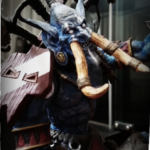

I think linking these events to that would be taking it a step too far, or rather just in the wrong direction. She indeed targets the tree of life and everyone in it, but that’s largely because it is A. the perfect representation of life and all that surrounds it and B. it’s the place that houses Darnassus, the capital of the Alliance Night Elves, a race she has a close connection with because of her family’s lineage and heritage. She is a Windrunner after all, who were a family of High Elves. It’s not because she wants to randomly destroy heritage or memory, nor is it because she has a personal vendetta, except for maybe with Malfurion. But then she’d have killed Malfurion. Sylvanas did all of this out of anger and hatred, anger towards the curse she’s been burdened with, hatred towards anything that lives. I very much agree with Csilla on that that is what is her main drive, she is after all the Queen of the Forsaken.

Did she target a culturally important landmark? Yes
Did she target it because it’s a culturally important landmark? No
I’ll make my case from an etic perspective.
First of all the divide between life and death is one of the great symbolic structuration mechanisms in WoW, going back to Warcraft 3. Quoting from your comments: “an enemy of life itself (she being undead) and in that sense it is the tree of life she is targeting”, “the perfect representation of life and all that surrounds it”. As a minor element, we see that the tree is a symbol of “hope” (and hope perhaps being linked to being alive vs the ultimate doom of an undead creature like Sylvanas, but that’s my interpretation) as the mention of hope winning out, makes Sylvanas destroy the tree.
Secondly, it is clearly an important marker of personal and communal identity (Darnassus, the capital of the Alliance Night Elves, a race she has a close connection with because of her family’s lineage and heritage).
Thirdly, in all the imagery I have seen of it thus far, it is the tree that is burning, the focus is entirely on the tree.
Fourthly, the different factions have always been genocidal towards each other (coming and going in waves as outside forces threaten or loosen up), but it is with this cultural symbol of a faction being destroyed that people from the opposite faction say: “no, this is not what we are.”
I honestly think that if Sylvanas had just been destroying a bunch of backwater farmlands with imagery focused on Alliance death and suffering, the backlash would not have been so strong
More darkly put, I feel that it is a political choice for the developers to target this landmark. Focusing on the destruction of place, rather than people as this is still something that is somewhere in the grey zone (or so they perceived).
In a way, this all reminds me a bit of the Harmanşah paper, linked by Aris some time ago, on IS heritage destruction. IS knows that people would get very upset about the destruction of heritage. It became one of the outrage-inducing but still television friendly performances (while obviously a lot of human suffering was going on) that led to us to deny them being culturally human (“IS is barbaric”). Just as now this attack on the tree (rather than all the billions of lives lost in the Horde/Alliance struggles before) now leads to the Horde losing what is most culturally defining for them (“Honor”)


Nah, it’s not that I think. The tree of life isn’t a a tree as much as it’s their homeland. It’s the same as attacking Stormwind city, or raiding Dalaran. It’s where people live, community stuff happens and players interact.


It’s a symbol, sure, but not THAT much of a symbol.
I’ll stick to my guns here and point out that my analysis is simply the difference between lived-in heritage and a symbolic view on it.


You do that man ![]()
Though if you make (or write) your case, you could better refer to the shelling of Dubrovnik [see p.78], than ISIS’ destruction.
I’d rather not make any off the cuff analogies at all, hence the reference to the destruction of memory book or documentary
All of your comments are very much infused with symbolism and a hierarchy of place (“homeland”, same as other capital cities), not on x millions of virtual lives lost


No – rather the opposite: we are actually talking about the NPC lives lost, not on the tree as a symbol.
ok, I get that, but for me I think there is (at the very least) a powerful mix of lives lost in a culturally very significant place. It is not “and so Sylvanas ran wild in the backwater riverlands, killing 100.000 peasants.” Just as with most acts of orchestrated violence there is an unfortunate combo of functionalism and symbolism.


That I agree with.
And I support your case there – but that is very different than the destruction of memory you’re referring to
No, I would not argue that one can be separated or should be seen as separated from the other.
I would however argue that the place in which Sylvanas and the Horde forces end many virtual lives is chosen to symbolically amplify the destruction going on. Both from a personal (Sylvanas’ own heritage), communal (The Tree of Life as a socially, culturally and symbolically important place of the Alliance), and synthetic (the “destruction of Life” in game leading to the “loss of honor” in game to the internet upset and even real life threats out of game) perspective.
Let’s post this discussion (lightly edited) below Jaromir’s piece? I think it is a nice interactive argument. So if anyone has any final words to say in opposition of my etic/armchair Warcraft heritage scholarship, post them now! ![]()



I was going to say “Hey, I’ve got a strong horde connection too!”
But then I realised I play Blood Elf, dislike anything the Horde’s done after WOTLK.
Seeing that I’ve played both sides of the story, and that I’ve known these characters and locations for a looong time, I’d like to set apart how both sides (and then myself) see it.


It’s important to note that Alliance and Horde players each are told a slightly different story. Sylvanas makes her goals very clear to Horde players: take Teldrassil swiftly so the Alliance can’t reinforce it, taking their last capital city and major naval base on the continent. To do this, they need to strike quick AND kill Malfurion before reinforcements show up. Killing Malfurion comes as a bit of a shock, because players are not used to killing the Big Names.
From the Alliance point of view, you’re fighting a retreating battle until help shows up: there’s this giant army invading Darkshore, where most Nightelf players have spent quite some time. And then suddenly, both sides are shocked by a cinematic in which Sylvanas demands the burning of Teldrassil. Horde players watch as the city/tree of life burns, but Alliance players run around in the flames trying (in vain) to save as many citizens as they can from the flames.
Both sides are then rewarded for completing the quests with a mount. For some, this mount is the reason they did these quests: they don’t care much for the lore. For others, this feels like an insult. Alliance players have lost one of their capital cities and thousands of NPCs, a mount isn’t going to cure that. Horde players have just contributed to a heinous war crime, a mount feels inappropriate.
Blizzard has tried to create tension between factions before, most recently at the Battle for the Broken Shore. Alliance characters saw the Horde leaving them to die. Horde players knew better: their Warchief, Vol’Jin, was mortally wounded. Their position was all but overrun so they had to retreat, leading to the death of king Varian. In-game Alliance characters and some players held a grudge, artificially creating tension between the two player factions. This time around, the questline involving the burning of Teldrassil is even more focused on provoking fights between players.
As the Horde moves into Ashenvale and fights over Darkshore, players from both sides are tasked with quests that take place in the same areas and often contradict or compete with those from the other side. The Horde needs meat for its troops so it hunts animals, the Alliance wants to save these animals. Both factions fight over the new material Azerite on a small island. Horde players capture Nightelf citizens to protect them, whereas Alliance wants to make sure they don’t get captured. Fights are sure to break out (if players have enabled Player-Versus-Player, that is) in close proximity.
This works for some people: players are proudly waving the colours and icons of their respective faction, screaming “FOR THE HORDE/ALLIANCE” in chat, and defending Sylvanas’ actions (or calling for her head) on forums. A lot of players however, are not positive about the forced conflict: just look at the above mentioned shoulderpad-protest in support of Saurfang.
Still, Blizzard keeps fanning the fires with social media and ads: there’s tv advertisements showing people avoiding each other because one plays Horde and the other Alliance (which is, unfortunately, something that actually happens), their Twitter account tell their followers to “#ForTheHorde or #ForTheAlliance” to “find out which faction has the most dedicated followers”.
It’s weird that a games developer creates an artificial war and promotes it by trying to incite division and tribalism in the real lives of their players. I might even go so far to say it feels immoral. But then again, I’ve always played both sides and didn’t buy into the Horde vs Alliance thing.
Pretty good sum up of what happens in game indeed. The saurfang dishonorable strike and refusal to finish the job was a sign that stuff is going to go to shit with Sylvanas at some point. I see her appearing as a raid boss at some point, and I’m not alone in that if you read through Reddit and other places. I’m not convinced of this obviously, but I see it as a possible outcome. This graph illustrates this pretty well!


What’s the Warcrime committed in 5.04?
Attack on Theramore Isle.
Manabomb…


Theramore island seems still significant to many players/lore because of being early questing area/home of Jaina and capital. So… compared to the out-game uproar then and now? Different?


Uproar now is way higher, but I’m not sure why that is. I mean, Teldrassil has a bigger place in WoW and is an actual capital. Theramore is more of a quest-hub/travel location. There’s been way more buildup to Teldrassil too: teasers, videos, and now this quest line. Theramore was a Scenario (seperate from the main world) that you could participate in if you queued up.
I am just going to put it out there that the symbolic action of the Tree of Life burning is a stronger one than the destruction of the keep of Theramore.
It is, once again as outsider, a much more visually arresting image for me


Btw (having missed much of this conversation) the burning of the tree is also very much about the loss of life. On the alliance side you get an impossible quest to douse fires and save nearly 1k civilians in 3 minutes or so. I may have saved like 50. So you’re thrown into it as a rescuer of innocent lives but knowing it is an impossible task. You’re teleported out when you start asphyxiating but knowing hundreds will die. The images of the burning tree might be a “milder” way of visually showing the incredible loss of life which is what people are revolting on. Not saying the symbolic/visual of the burning tree is not stronger than a possible extermination of villages… But if you’d go around burning a landscape people could theoretically flee. Here there is no real escape as it’s a massive tree in the ocean all of which is aflame.
Yeah, I can’t remember another quest that is created to be impossible to complete. Nothing I noticed/remembered at least. I played the quest twice because our friend Hoogin has asked me to play it for him to get the mount now he’s in the army but I really tried to save as many as I could the second time around and it was frustratingly impossible. More so knowing that you will be teleported to safety but for some reason they can’t just do that with the whole population of Darnassus.
Yeah, I believe that that is the first time ever that a quest gives off a vibe like that, don’t you think?
I felt that was really impactful too.
I see that all of us that have actually played it and therefore experienced it have somehow a slightly different feel about the event, which shows that the writing and mechanical part of this is actually pretty well done, no matter what the community says. I still enjoyed the (much too short in comparison to Legion’s) pre-patch campaign a lot.
I’ll conclude by saying that out of all this nastiness came many good things as well, from the community to standing up for its writers to this beautiful shanty in Warbringer: Jaina’s short video.


